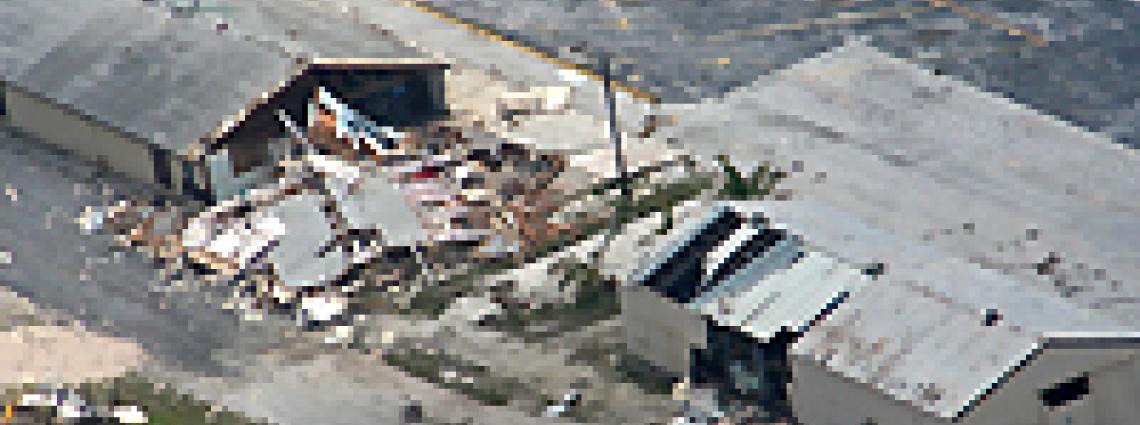Braving the storms - constructing hydroacoustic station HA11 at Wake Island

Typhoon Ioke swept over Wake Island on 1 September 2006, causing considerable damage.

Hydrophone nodes are ready for deployment into the ocean.

A hydrophone node is being deployed. The orange ball is the subsurface float underneath which the hydrophone is suspended.

The cables are brought to the island from the sea through an underground tube and secured in an anchor pit.

The building of the shore facility of hydroacoustic station HA11 has been completed. A manhole cover allowing secure access was put on the anchor pit in front.

Shore facility construction and communication installations had already been built in April 2006.

Wake Island is known as a bird sanctuary - here a colony of Arctic Terns - an aspect which had to be taken into account when building the station.

This graph shows the location of the underwater sea mounts near Wake Island where the hydrophones are deployed. The area in blue is the area that was surveyed prior to station installation.
28 Mar 2008
